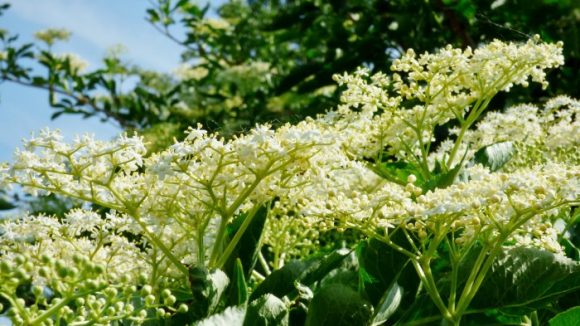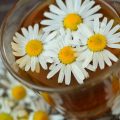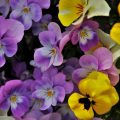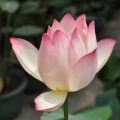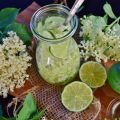- The Miraculous Shiny Bush Plant - January 18, 2021
- Colorful, Edible and Medicinal Celosia - January 10, 2021
- Radish, a Nutritional Power House - December 19, 2020
The elderflower is a deciduous shrub of the Adoxaceae family. It grows to 6 meters ( (nearly 20 feet) tall and has light grey bark during the initial stages of growth but gradually changes to a coarse grey later on. The leaves are 10-30 cm long(about 8-12 inches) and are arranged in opposite pairs, featuring 5-7 leaflets with a serrated margin. Elder shrubs bloom in late spring to mid-summer bringing forth aromatic, hermaphrodite flowers that are ivory white with 5 petals pollinated by flies.
[Note: The Right Flowers is not a medical site. Knowledge of and information about the therapeutic benefits and applications of flowers, while known through the ages, does not constitute medical advice. If you are having health issues, you should consult with a physician.]
For the purpose of this article, we shall concentrate on the European version of the elder plant (Sambucus nigra ) which is native to Europe and (Sambucus canadensis ) the North America version of nigra. The American elderflower plant thrives in the US and Canada in zones 3-8. You are likely to see it growing along lakes, streams, in ditches, fence rows and along roadsides.
The elder shrub derives its English name from the Anglo-Saxon word, Aeld meaning fire. According to ancient Celts, the shrub was not to be trifled with as it hosted a spirit who must not be angered. The folklore held that if the spirit was angered, she had the potential to strike the offender with lightning. Celts revered the plant so much that they had to seek its consent before cutting its branches. However, the branches once cut, could not be used for firewood or for woodwork, lest the offender incurred the wrath of the host.
Elderflowers open from the outside-in, so, if you are picking them, harvest the blossoms that are fully open in the center. You should also avoid picking the flowers when they are wet or after a storm because they normally turn dark when dried instead of retaining their creamy color.
Medicinal uses
According to ancient records from Dioscorides, Hippocrates and Pliny the Elder, the tree has longstanding herbal properties. In a 1644 book by Dr. Martin Blochwich titled The Anatomy of Elder, the doctor describes how the tree was used to treat 70 different diseases.
Elder tree blossoms are known to have anti-inflammatory effects, especially on the upper respiratory system. These make them ideal for treating common respiratory ailments including sinusitis, colds and flu. In addition, herbalists hold that infusions made from flowers of the elder plant are great for managing hay fever but only when the flowers are picked before pollen appears.
Elderflowers tinctures are commonly used to provide relief from excess mucus and congestion. The tinctures are also great for soothing sore throats, relieving headaches and making eyewash for inflamed eyes.
Today, you may not need to ask the elder shrub for permission before picking its flowers compared to ancient times, but you do need to hold this flowering plant in awe for its beneficial properties.
